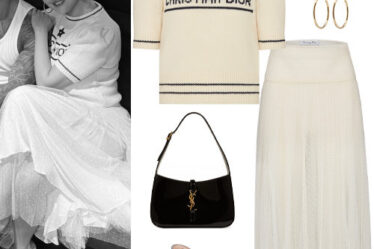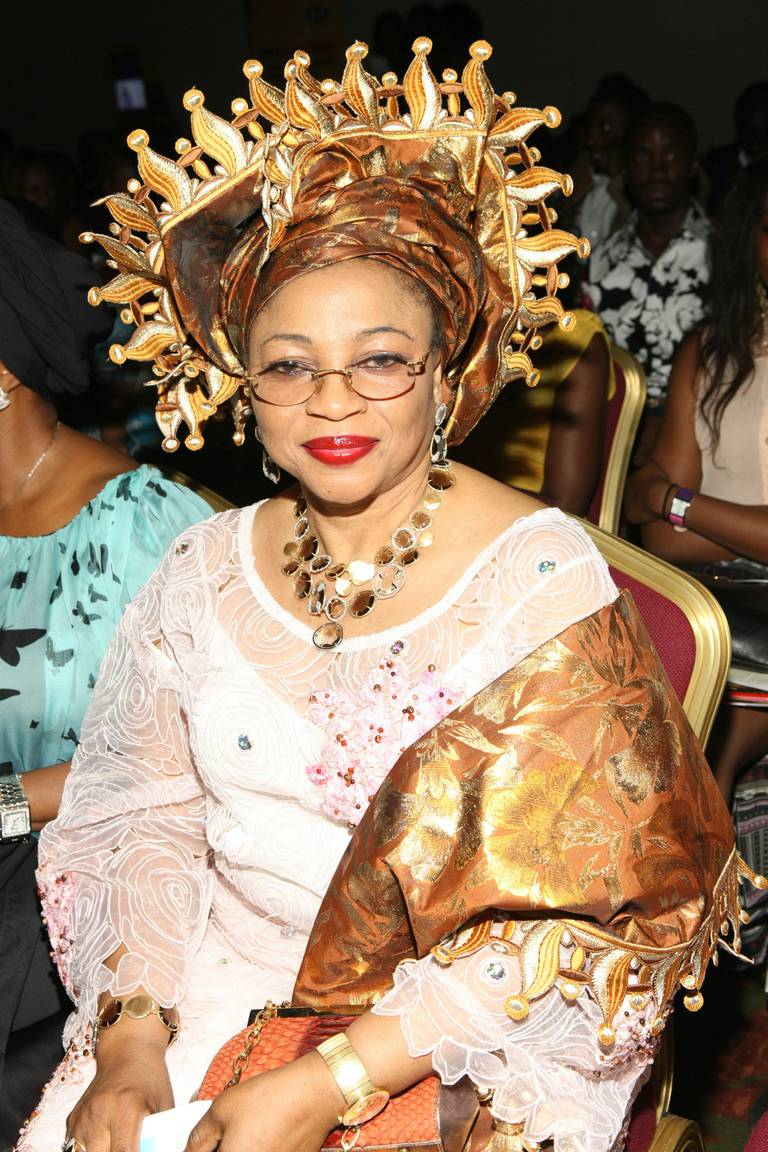
LAGOS, Nigeria — Traces of Mike Adenuga’s billion-dollar empire can be found on almost every street corner of Nigeria’s sprawling metropolis. Giant green billboards featuring popular Nigerian celebrities and streetlight banners asking passersby to “Glo with pride” are just two examples. With control of almost 30 percent of the country’s telecommunications market, Mike Adenuga is a bona fide success story. He is also rather famous — though most who know his name would be surprised to learn that the telecoms titan’s wealth was built on the back of fashion.
According to sources at Forbes, long before Adenuga erected 12,000 mobile phone towers across West Africa, his “first million” came in part from importing and selling jacquard lace from Europe. For decades, traders like Adenuga have imported opulent varieties of Swiss and Austrian lace which are popular among well-off West Africans when commissioning tailors to make traditional outfits like the iro and buba, a fashion staple at Nigerian weddings.
Adenuga first entered the Forbes rich list in 2011, as Africa’s newly crowned billionaire, and with an estimated $8.8 billion net worth, he is now the second richest person on the continent — not far behind fellow Nigerian Aliko Dangote, who made his fortune from cement and has held the position of Africa’s richest person for almost a decade.
When discussing the source of wealth for Africa’s billionaires and centi-millionaires, experts are quick to cite natural resources and infrastructure. But apart from South African billionaires Nicky Oppenheimer and Johann Rupert whose fortunes famously come from luxury goods (De Beers and Richemont respectively), an often-overlooked source of wealth on the continent is the fashion industry.
According to BoF’s analysis of the past and present business ventures of the current 20 African billionaires listed by Forbes, 11 of them (55 percent) can thank the fashion business for part of their fortunes – and that’s not counting billionaire’s wives, at least two of whom are involved in fashion. How did these fascinating moguls and mavericks leverage the fashion industry to get to the top?
Empires Built From Stitches and Sewing
Like Adenuga, Folorunsho Alakija, one of the richest women on the continent, also got her start in fashion. Before amassing part of her billion-dollar net worth from the oil industry, Alakija studied fashion in London in the 1970s. By 1985, she had launched Supreme Stitches to create bespoke outfits for big-name clients, like wives of former heads of state, most famously Maryam Babangida — wife of a Nigerian military ruler.
Folorunsho Alakija at the Diamond Collection By Folake Majin Fashion Show in 2012 | Source: Getty Images
It is said that the relationships Alakija cultivated during her time as a fashion designer served her a great deal when she decided to make a leap into the oil industry. Over a decade after opening Supreme Stitches, Alakija renamed the brand The Rose of Sharon House of Fashion and shortly after started mass producing T-shirts.
Forbes’s most recent estimation of billionaires from the continent caps the number at 20, but the continent’s list of high net worth individuals (HNWIs) is much larger. The 2019 Africa Wealth report estimates that there are 140,000 HNWIs (US dollar millionaires) in Africa. And according to several independent sources, that number is set to rise significantly over the next decade.
Growing wealth at the top of the pyramid is not necessarily an indication of Africa’s economic strength. Critics contend that, instead, it is proof of the continent’s pervasive wealth inequality and the growing chasm between extreme wealth and extreme poverty. A boom in African millionaires doesn’t suggest that wealth is being distributed more fairly globally either. Reports estimate that despite accounting for 16 percent of the world’s population, Africa only accounts for 1 percent of the total worldwide wealth.
Still, the luxury sector in Africa generated an estimated $6.1 billion in revenue in 2018, with South Africa, Kenya and Nigeria as the top three contributors, according to the most recent Africa Wealth Report by Johannesburg-based New World Wealth and Mauritius-based AfrAsia Bank. In spite of the continent’s well-documented challenges and emerging market status, the luxury sector is already paying dividends for some — most notably the European brands sold there but also for an elite group of local distributors and retailers.
Experts say that luxury is a challenging sector for Africans to build a fortune. “It’s not the easiest path to accrue large amounts of wealth,” says Bronwyn Williams, trend forecaster at Flux Trends, a business trend company based in South Africa. “A lot of [billionaires] have their roots far back in history; not many are contemporary success stories,” she adds.
Nevertheless BoF’s analysis of billionaires and centi-millionaires on the continent shows that many can point to the fashion industry as either one of the roots of their wealth or as a stepping-stone. Whether through the diversification of family textile mills or finding fashion brand tenants for shopping malls — an increasingly popular attraction in megacities around the continent — many wealthy Africans can thank fashion or adjacent industries for a significant proportion of their wealth.
Take Nassef Sawiris as a case in point. It is not unusual to see the Egyptian billionaire investing in companies outside his core industries of construction and chemicals, the two sectors where he has made the bulk of his wealth. After venturing into technology and other areas, Sawiris purchased a 6 percent stake in Adidas in 2015, and a year later he joined the brand’s supervisory board.
Old-Money Retail Dynasties
“[Once] South Africa was not only the retail capital of Africa but one of the retail capitals of the world,” says Chris Bishop, author of “Africa’s Billionaires” by Forbes Africa. The country is home to household names like Shoprite and Woolworths as well as magnates like Raymond Ackerman and Christoffel Wiese who have made fortunes from building giant retail corporations.
Last year, Forbes estimated Wiese’s net worth at $1.1 billion and this year he announced his retirement from the Shoprite supermarket chain which he led. But even before he became “Mr. Shoprite”, Wiese was executive director of Pepkor, a discount clothing chain his parents helped found. Although Pepkor is no longer just a standalone endeavour, in the 2018 fiscal year clothing and general merchandise brought in 66 percent of the parent company Pepkor Holding’s total revenue.
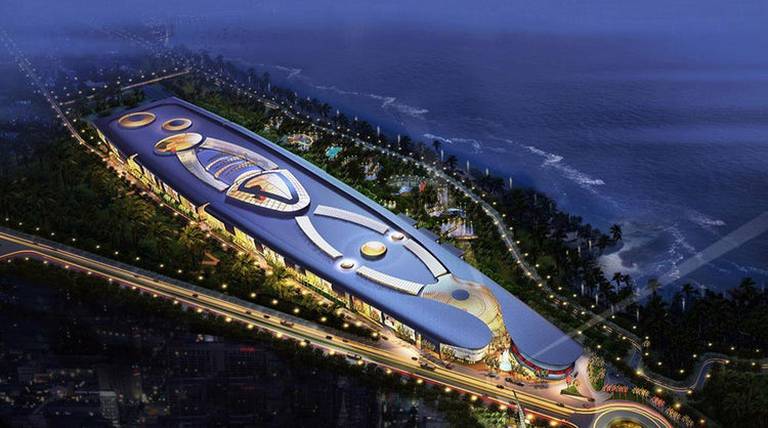
A rendering of the Morocco Mall in Casablanca | Source: Aksal Group
The group’s reach across the continent is impressive. Its Pep stores sell 55 percent of all school wear in South Africa, and distribute fashion merchandise to over 2200 stores including outlets in other African markets like Angola, Malawi, Mozambique, Uganda and Zambia. The retailer has become so ubiquitous in southern Africa that the firm now boldly uses the slogan, “A town is not a town without a Pep”.
One of the brands Pepkor acquired in 1984 was Ackermans, a name that is deeply entrenched in South Africa’s retail history. Founded in 1916 by Gus Ackerman, father to Raymond Ackerman, the company was a value clothing retail chain, a far cry from the failed ostrich feather business that Raymond’s grandfather Meyer Ackerman attempted to start when he arrived in South Africa from Lithuania at the end of the 19th century.
Although it was Raymond Ackerman’s grocery empire Pick n Pay that earned him a spot on the Forbes list of 50 Richest Africans back in 2015 with a reported net worth of $500 million, the Ackerman name is still synonymous with clothing, selling everything from denim to dresses for as low as $10. Today the retail chain counts 700 stores, 80 of which opened in the 2018 financial year.
South Africa’s fashion billionaires are not limited to octogenarians and brick-and-mortar scions. Koos Bekker, who is worth $2.2 billion, made all his money online from ventures like internet group Naspers. Today the billionaire’s reach goes as far as Takealot, one of the country’s largest e-commerce marketplaces selling clothing and other merchandise.
Female Entrepreneurs Join the Family Fortune
“The African fashion ecosystem favours business people [who already have] money [so they often get] the main [brand] franchises and dabble in fashion. Most of the time, fashion is just another way of investing and branching out to other territories,” says Jamila Halfichi, the Moroccan-born fashion editor of pan-Arab newspaper Asharq Alawsat.
Indeed, many fashion entrepreneurs on the continent have struck it rich in other sectors before deciding to try their luck in the fashion industry, and one popular connector to the industry is family.
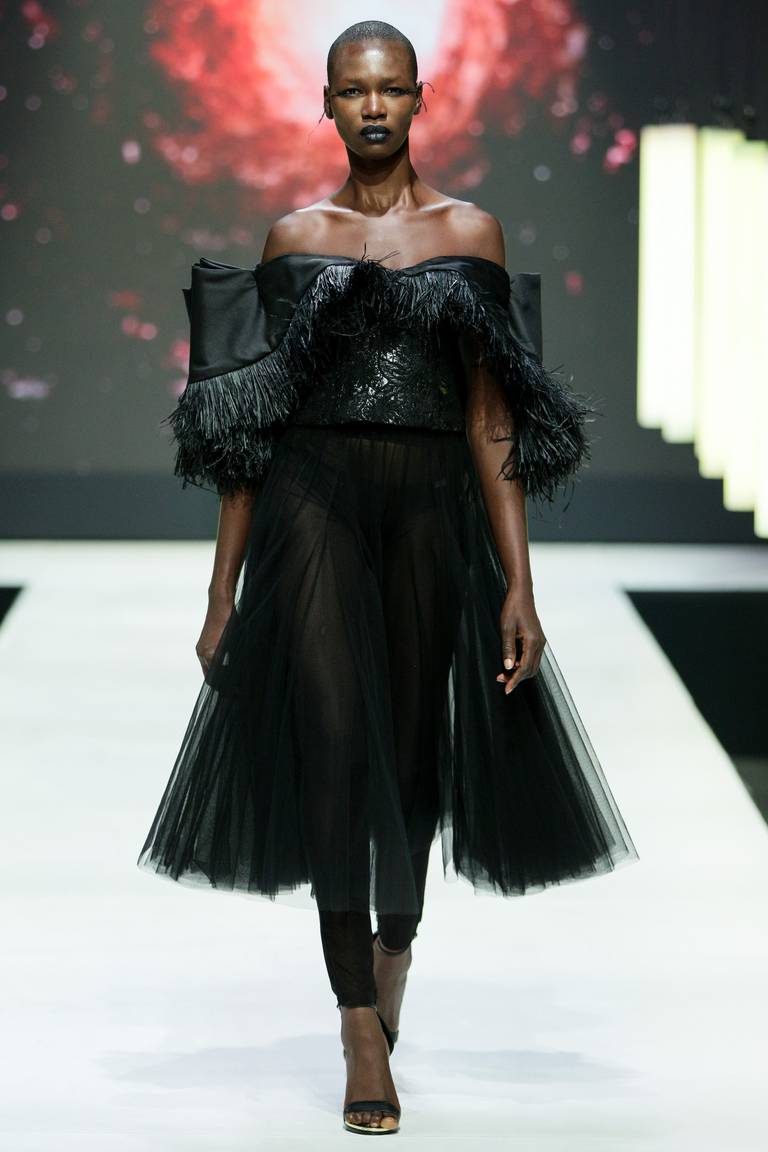
David Tlale 2019 show at African Fashion International Johannesburg Fashion Week | Source: African Fashion International
Take Patrice Motsepe, a South African mining magnate worth $2.2 billion who was the first black African to join the Forbes billionaires list over a decade ago. But in the fashion industry, it is his wife, Precious Moloi-Motsepe, whose name people recognise instantly. Moloi-Motsepe is the founder of African Fashion International, a full-service fashion agency and the brains behind fashion week events in both Johannesburg and Cape Town.
One business opportunity that is often overlooked even by fashion industry insiders is the apparel after-care sector. Although the bulk of Femi Otedola’s fortune (worth $1.8 billion in 2016 but reportedly on the decline since) comes from his oil ventures, Otedola’s wife, Nana Otedola, founded Garment Care Limited, a popular dry cleaning company in Nigeria. Their youngest daughter, Temi, is now making a name for herself in fashion as a blogger under the initials J.T.O. and has collaborated with Nigerian brands like Orange Culture.
The 13th richest person on the continent on this year’s Forbes list is Aziz Akhannouch who attributes most of his $1.7 billion fortune to his family-owned conglomerate the Akwa Group. But what the listing fails to mention is Aziz’s wife, Salwa Idrissi Akhannouch, CEO and founder of the Aksal Group, a luxury fashion company based in Casablanca, who is one of the wealthiest women in North Africa. From as early as 2001, Salwa has been bringing fashion brands like Gucci and Zara to Morocco’s major cities. She also constructed the Morocco Mall, which is now one of Africa’s largest shopping centres.
From Political Intrigue to Textile Moguls
In Africa, there is often a direct correlation between wealth and politics. Some politicians have been the biggest profiteers of the continent’s resources or have used their power to stop others from accruing wealth.
In Egypt, the family-owned Mansour Group is one of the country’s largest revenue generators. The company started out as Mansour and Sons Cotton in 1952 and quickly became the second-largest cotton exporter in the world. But in 1964, Egypt’s nationalisation of major industries, including cotton, forced the oldest Mansour, Loufty, to flee to Switzerland where he set up a cotton brokerage and instead connected Sudanese cotton traders with international buyers.
Now, the company’s interests have diversified outside of the cotton trade to include automobiles and tobacco. All three of the current generation of the Mansour brothers — Mohamed, Youssef and Yasseen — are billionaires in their own right on this year’s Forbes list.
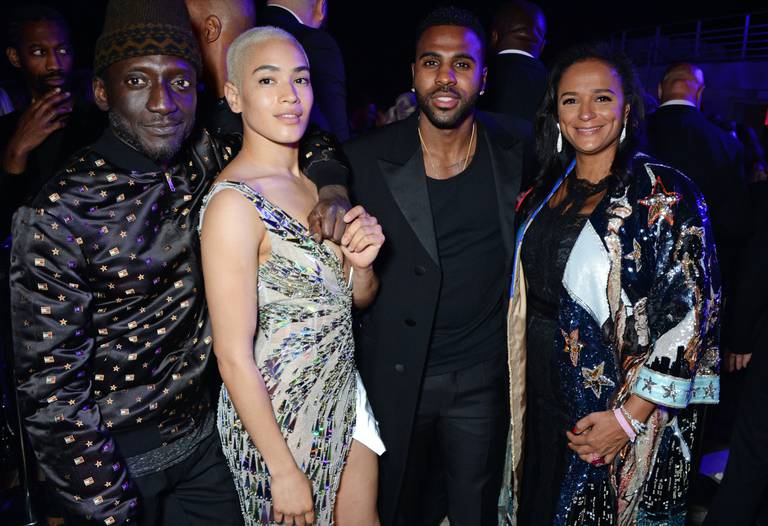
Mette Towley, Jason Derulo and Isabel dos Santos at the amfAR Gala Cannes 2018 after party | Source: Getty Images
When political connections end, it can often be fast and abrupt leaving once chummy cronies shut out and in the cold. In Angola, diamond mines have always been a source of political and economic contention. They have also been a source of wealth for Isabel Dos Santos, daughter of the former Angolan president, José Eduardo dos Santos. But when her father’s successor the new president João Lourenço took over, he promised to tackle corruption and family monopolies, and Isabel Dos Santos’s diamond exploration licenses were reportedly revoked last year. She needn’t worry though – Forbes estimates she is still worth £2.2 billion making her the richest woman in Africa.
On the other side of the continent, politics and business were also intertwined for Mohammed Dewji. For over a decade, the Tanzanian native built his business empire while serving as a member of parliament, at one point even campaigning alongside the former president. Today he heads the Metl Group, a conglomerate which owns four textile mills in Tanzania and Mozambique and is said to produce over 100 million running metres of fabric that is exported around the continent. One of the youngest African billionaires entrepreneurs, Dewji’s net worth is now estimated to be $1.9 billion.
In addition to the continent’s billionaires, there are over 300 centi-millionaires living in Africa, each with net assets of $100 million or more, according to the most recent Africa Wealth Report. Like their wealthier counterparts, fashion has played a role in the fortunes of many and some started from humble beginnings. Take Tanzania’s GSM Group, whose current president Ghalib Said Mohamed oversees a portfolio of glittering shopping malls, but which began with Mohamed’s ancestor hawking clothes on the streets of the port city of Tanga.
Indeed, from Ato Ketema Kebede’s riches built on acrylic yarn in Ethiopia to Yerim Sow’s Senegalese shopping mall that is home to brands like Adidas and Hugo Boss, fashion has been an important way for more “moderately wealthy” Africans to find success outside the billionaires league.
Despite the continent’s many well-documented challenges for starting a business, the most recent Africa Wealth Report shows that the total private wealth held in Africa is expected to rise by 35 percent over the next 10 years, reaching $3 trillion by 2028. While other industries have reigned supreme in terms of wealth generation, the sizeable list of businessmen and women who found ways to monetise the fashion industry suggests that Africa’s entrepreneurial youth can follow similar paths to fortune.
Indeed, with the likes of Dewj in the East, Sow in the West, and Akhannouch in the North, they needn’t even look far for inspiration.
Related Articles:
[ Don’t Be Late to the $10 Billion African Beauty Party ]
[ Manufacturing in Africa Could Transform the Fashion Industry. But Who Would Benefit? ]



